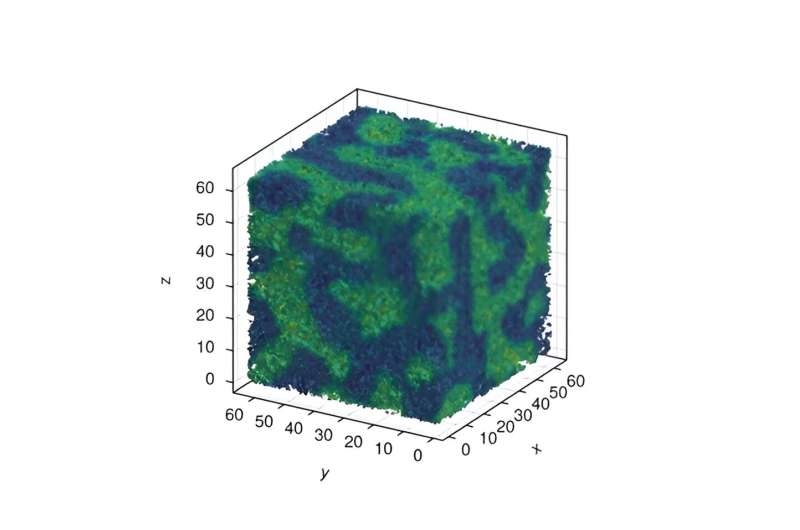Scientists are conducting experiments in search of evidence of a possible critical point in the Quantum Chromodynamics phase diagram. Quantum chromodynamics describes how the strong force binds quarks and antiquarks together to form protons, neutrons, and other particles known as hadrons.
The critical point is analogous to the endpoint of the transition from liquid to gas in ordinary water. The main signatures of this critical point that scientists can observe are related to changes in the number of particles produced in particle accelerator collisions.
Modeling these observables requires an extension of the standard framework of how liquids and gases behave. In a study published in the journal Physical Review Letters, scientists have now developed an algorithm for performing simulations of a critical fluid and have tested those simulations.
Observing critical fluctuation in a heavy ion collision would mark the first direct observation of a phase change between the quark gluon plasma and a hadronic phase. This is the point where quarks and gluons are confined in hadrons.
Interpreting the results of related experiments requires new theoretical tools. In particular, the interpretation needs a fluid dynamic framework that incorporates fluctuations—how pressure, velocity, and other factors can change in liquids and gases.
This work is an important contribution to this effort. In the future, researchers hope to use these methods to connect the data with theoretical ideas about the nature of temperature and pressure in quark-gluon matter.
The Beam Energy Scan (BES) program at the Relativistic Heavy Ion Collider, a Department of Energy user facility at Brookhaven National Laboratory, studies the energy dependence of fluctuation observables in the collisions of heavy ions.
The goal of this effort is to locate a possible critical point associated with the phase transition to a quark gluon plasma. Interpreting the results of the BES program requires a fluid dynamic framework that incorporates fluctuations in the fluid dynamic variables, baryon density, entropy density, and fluid velocity.
In this research, scientists have constructed such a framework and tested it in simulation of a static fluid near the critical point. Future work will couple their results to the expansion of the fireball created in a heavy ion collision. This will enable researchers to either locate the critical point or place constraints on its location.
More information:
Chandrodoy Chattopadhyay et al, Simulations of Stochastic Fluid Dynamics near a Critical Point in the Phase Diagram, Physical Review Letters (2024). DOI: 10.1103/PhysRevLett.133.032301. On arXiv: DOI: 10.48550/arxiv.2403.10608
Provided by
US Department of Energy
Citation:
Simulating a critical point in quark gluon fluid (2024, September 24)
retrieved 1 October 2024
from https://phys.org/news/2024-09-simulating-critical-quark-gluon-fluid.html
This document is subject to copyright. Apart from any fair dealing for the purpose of private study or research, no
part may be reproduced without the written permission. The content is provided for information purposes only.

